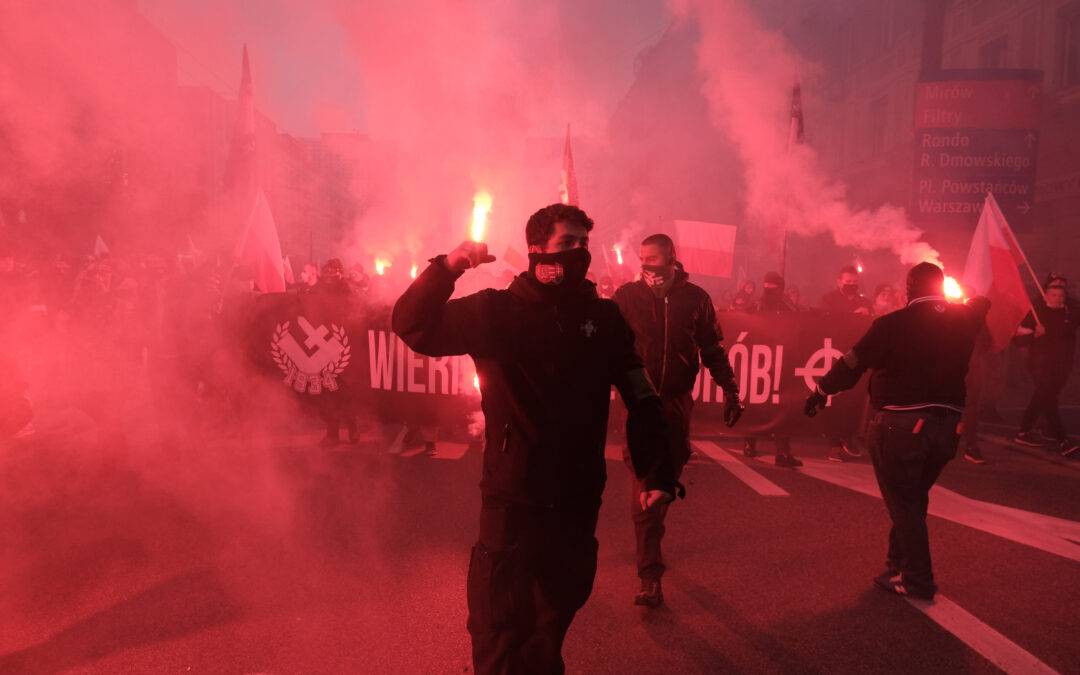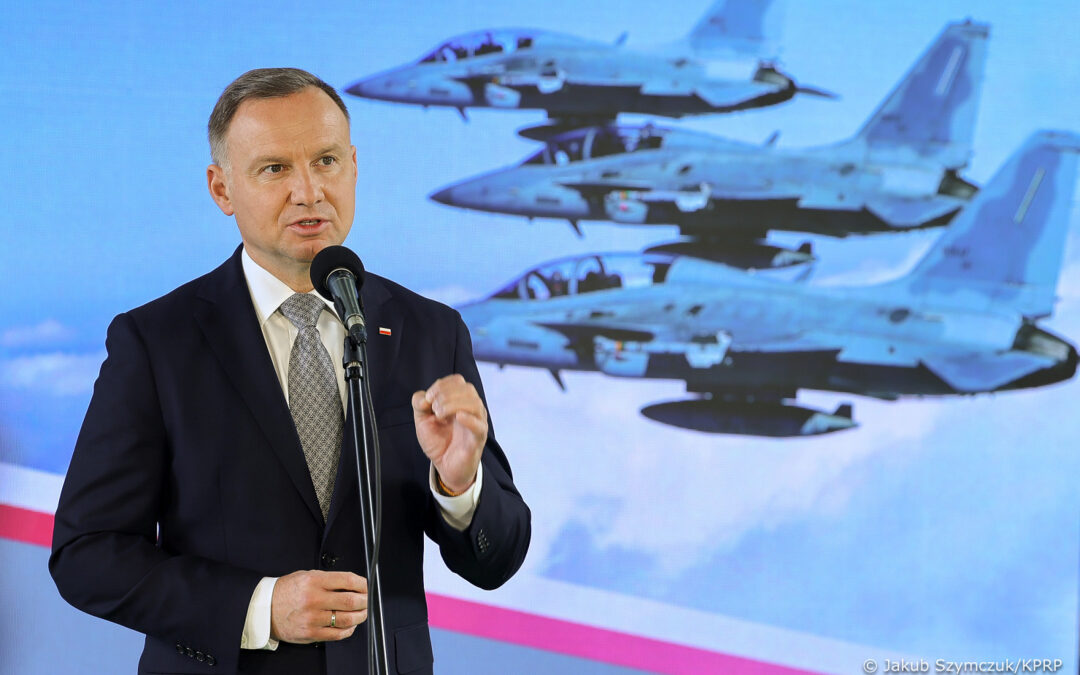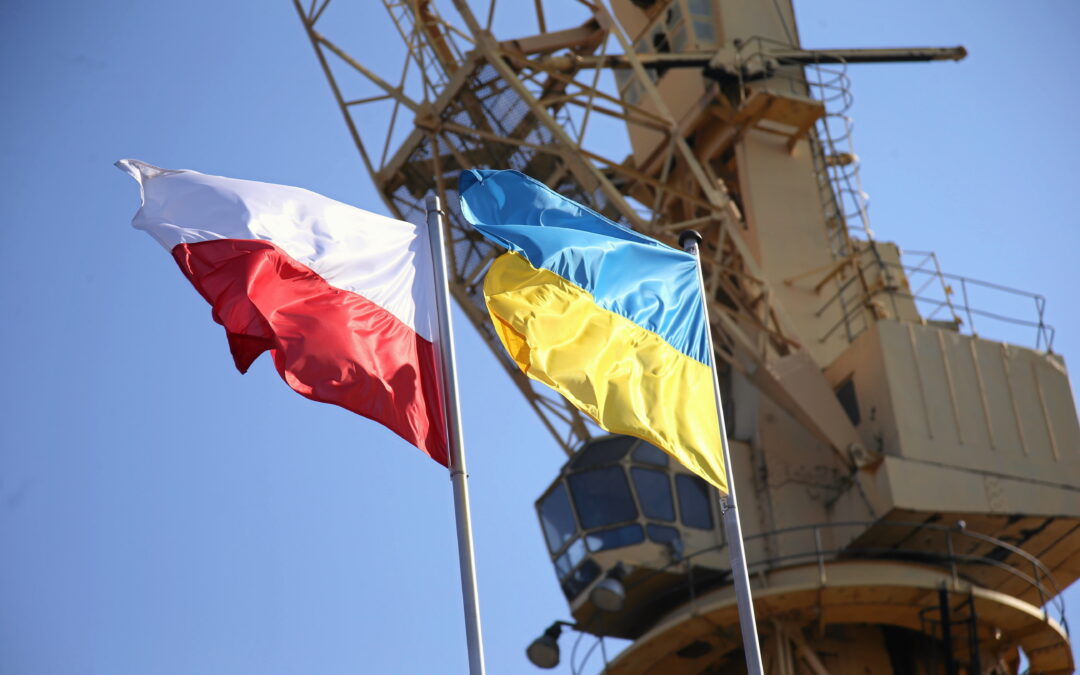The annual Independence Day march in Warsaw, organised by far-right groups, saw outbreaks of violence today.
Groups of men clashed with police, throwing missiles at them. The police themselves were accused of brutality against members of the press. An apartment on the route of the march was also set on fire, after participants threw flares at a building where an LGBT flag was hanging.
The Independence March – which normally attracts tens of thousands of participants – is the largest event that takes place on 11 November, when Poles celebrate the anniversary of their country returning to the map of Europe in 1918.
This year, however, the mayor of Warsaw banned the march, due to the pandemic. The organisers – who are from radical-nationalist organisations – therefore appealed for participants to attend in cars or on bikes.
While some heeded this request, many others arrived at the march’s starting point on foot this afternoon and began the procession as normal. Soon after, confrontations broke out as groups of men threw flares and paving stones at police.
Some participants in the Independence March have clashed with police. For more footage, see the timeline of @piotrdrabik, a journalist on the ground pic.twitter.com/wESsY4sw40
— Notes from Poland 🇵🇱 (@notesfrompoland) November 11, 2020
Further along the route of the march, some participants launched flares at a building where a balcony was displaying an LGBT rainbow flag and a banner bearing the symbol of Women’s Strike, the main organiser of recent protests against a ruling that introduces a near-total ban on abortion.
One of the flares landed inside an apartment below that balcony, starting a fire inside. The fire service confirmed that they had attended the scene and that the fire had been caused by a pyrotechnic device thrown into the building, reports Wirtualna Polska. No one was hurt in the incident.
The official poster advertising this year’s march featured an image of a soldier using a sword to shatter a communist-style red star with LGBT rainbow colours added. The event’s slogan was “Our civilisation, our rules”.
Footage of participants in the Independence March throwing flares at a building where LGBT and Women's Strike flags were hanging. They started a fire in the apartment below. The fire brigade confirm that no one was hurt pic.twitter.com/yxJQs2GXU6
— Notes from Poland 🇵🇱 (@notesfrompoland) November 11, 2020
Later, as the march arrived at the National Stadium – which has been turned into an emergency COVID-19 hospital – further clashes with police took place. Bottles, flares and other objects were thrown at offices, reports RMF24.
Footage also shows that, around the stadium, police used force against members of the press, including hitting them with batons. Earlier in the day, a well-known photojournalist, 74-year-old Tomasz Gutry, was injured by a rubber bullet fired by police. He required an operation in hospital to remove it.
The publication that he works for, Tygodnik Solidarność, reports that Gutry was shot “from a few metres away”. Two MPs from the ruling coalition – Joanna Lichocka and Kamil Bortniczuk – called on the authorities to provide an explanation of how police could have fired on a member of the press.
A well-known photojournalist, 74-year-old Tomasz Gutry, was injured by a rubber bullet fired by police at today's Independence March in Warsaw
They reportedly shot at him "from a few meters" away. Two MPs from the ruling party have demanded an explanation https://t.co/QYRIP2Rvdm
— Notes from Poland 🇵🇱 (@notesfrompoland) November 11, 2020
In a statement issued on Twitter, Warsaw police admitted that they had caused injuries to members of the press, including “very serious ones suffered by one photographer”.
They noted “journalists are always at the centre of events” and sometimes, “in the course of dynamic action, when we are dealing with numerous hooligan acts, a situation can occur in which outsiders may also be injured…That is why it is important to leave the place of our actions”.
The police said they were “sorry to see” that Gutry was injured and they wished him a quick recovery. “We will clarify the circumstances of this situation, just like any other doubts,” the statement concluded.
Niestety bardzo poważnie wyglądają obrażenia, które doznał jeden z fotoreporterów. Po ludzku jest nam przykro i liczymy na szybki powrót do zdrowia Pana Tomasza. Wyjaśnimy okoliczności tej sytuacji. Tak samo, jak każdą inną wątpliwość.
— Policja Warszawa (@Policja_KSP) November 11, 2020
The organisers of the Independence March claimed that clashes were caused by the “provocative attitude” of the police. They also alleged – without presenting any evidence – that violence was carried out by “masked Antifa activists”.
The police rejected these “false and irresponsible” explanations, saying that their officers had only responded when they themselves were attacked. “We will always react firmly to any hooliganism,” said the spokesman for Warsaw police, quoted by RMF24.
The interior minister, Mariusz Kamiński, issued a statement blaming the incidents on the “aggressive actions of some participants in the march”, including “direct attacks on police”. This made the use of force by officers necessary and justified, wrote Kamiński.
The minister did, however, “express appreciation to all participants of the Independence March who appropriately commemorated today’s anniversary”.
.@PiotrGlinski: Chciałbym wiedzieć, jakie to środowiska zachowywały się w tak agresywny sposób#MarszNiepodległości #wieszwięcej pic.twitter.com/CQxfilbIPZ
— tvp.info 🇵🇱 (@tvp_info) November 11, 2020
Another member of the government, deputy minister Piotr Gliński, suggested in an interview on state television that the violence had been caused by a “group of provocateurs”
An opposition MP, Michał Szczerba, however, placed the blame on the organisers of the march, and called for their leader, Robert Bąkiewicz, to be arrested. Szczerba shared a photograph showing Bąkiewicz standing in front of the apartment that had been set on fire.
Bąkiewicz in turn posted a video showing him at the scene appealing to people to leave and not let themselves be provoked.
Before becoming the main organiser of the Independence March, Bąkiewicz was leader of National Radical Camp (ONR), an ultranationalist group that calls for an “ethnically homogeneous” Poland. He recently formed “self-defence” squads to physically defend churches from abortion protests.
.@Policja_KSP wnoszę w ramach interwencji poselskiej o natychmiastowe zatrzymanie i przesłuchanie R. Bąkiewicza organizatora nielegalnego zgromadzenia, które spowodowało narażanie życia mieszkańców kamienicy przy Al. 3 maja 2/4/6. pic.twitter.com/ARlyOyTtzt
— Michał Szczerba (@MichalSzczerba) November 11, 2020
The opposition mayor of Warsaw, Rafał Trzaskowski, blamed the ruling national-conservative Law and Justice (PiS) party for the violence, saying it had long been “flirting with” the nationalists who organise the march.
PiS leader Jarosław Kaczyński – who is a deputy prime minister in charge of overseeing security – “is fully responsible for today’s events”, said Trzaskowski.
PiS spokesman Radosław Fogiel called the accusations “absurd”. He noted that Trzaskowski himself had recently attended “illegal gatherings” during the pandemic – a reference to the ongoing mass abortion protests, which the mayor has expressed support for.
Before PiS came to power in 2015, the annual Independence March often resulted in rioting and clashes with police. Since then, however, it has been largely peaceful.
Opponents of the government claim that this is because PiS tacitly endorse the nationalists and have given them an effective monopoly on commemorating Independence Day.
PiS politicians argue that the majority of participants in the marches are patriots who want to celebrate peacefully and positively. In 2018 – on the centenary of Poland regaining independence – the government coordinated with the nationalists to march along the same route.
Main image credit: Slawomir Kaminski / Agencja Gazeta

Daniel Tilles is editor-in-chief of Notes from Poland. He has written on Polish affairs for a wide range of publications, including Foreign Policy, POLITICO Europe, EUobserver and Dziennik Gazeta Prawna.



















